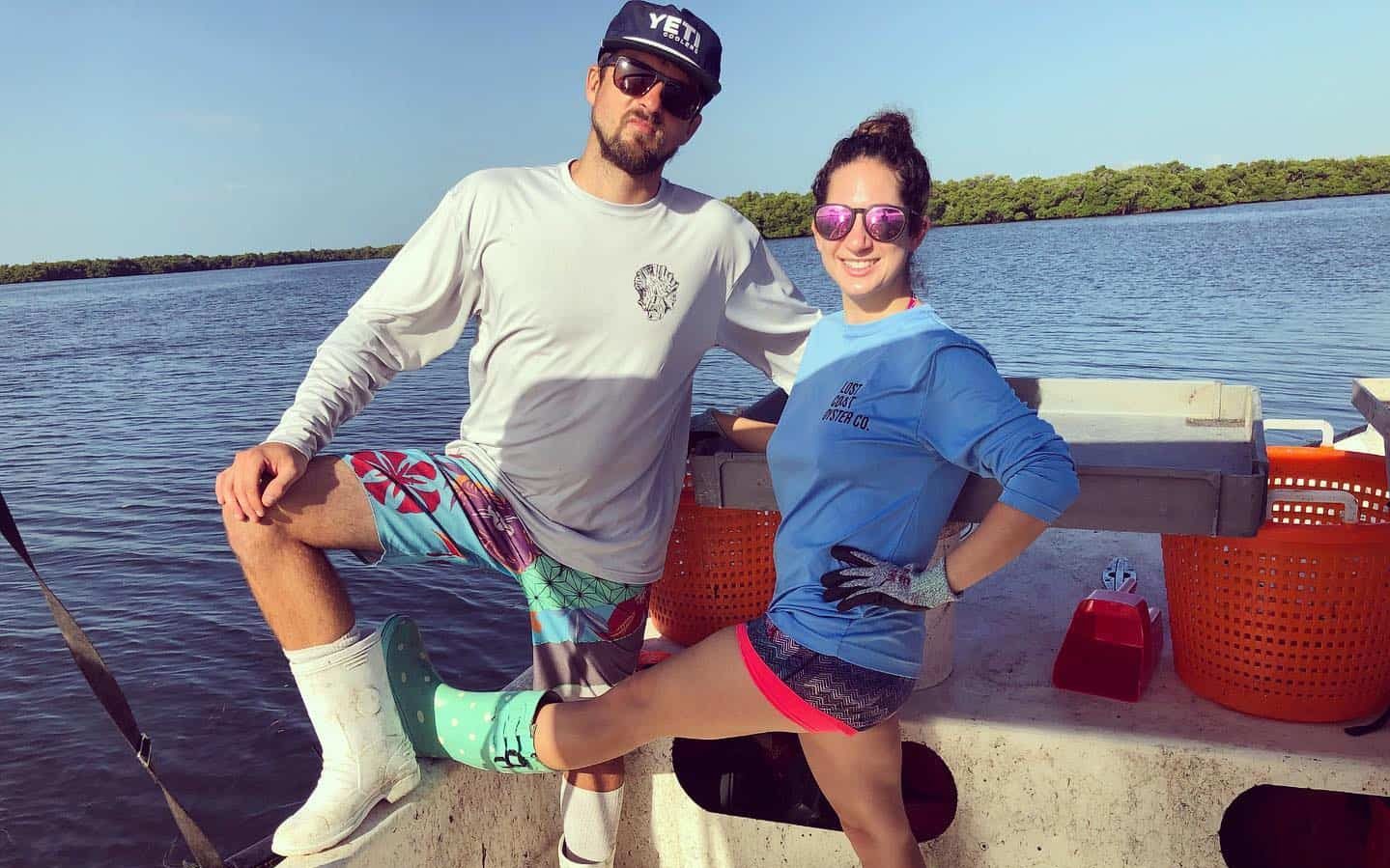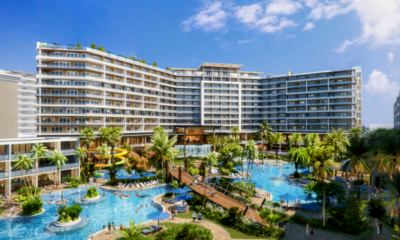Know
St. Pete’s Lost Coast Oyster Co. founders focus on local food, sustainable farming

A St. Petersburg couple wants to see the Tampa Bay area get on the map for oyster farming.
Not only are oysters a sought-after delicacy, but oyster farming is a sustainable method of farming that enhances water quality, said Brian and Lindsay Rosegger, founders of Lost Coast Oyster Co.
The couple has been working with J.P. DuBuque, president and CEO of the Greater St. Petersburg Area Chamber of Commerce, who said Lost Coast Oyster may be the start of a new industry in the Tampa Bay area.
Oysters have been a focus for Brian Rosegger since he graduated nine years ago from University of South Florida with a bachelor’s in environmental science. His first job after graduation was conducting damage assessment from the BP oil spill, doing field work from western Louisiana to Florida’s Panhandle.
While doing that work, he learned that historically about 10 percent of the nation’s wild oysters came from Apalachicola Bay in the Panhandle, and nearly 90 percent of Florida’s production came from Apalachicola.
But the Apalachicola Bay oyster population has been declining since 2013 after years of low water flow conditions, according to the Florida Fish and Wildlife Conservation Commission, which approved draft regulations in July that would temporarily suspend all harvest of wild oysters from Apalachicola Bay through 2025.
The Florida Department of Agriculture has been promoting shellfish harvesting in Alligator Harbor, also in the Panhandle, but the industry is new for the Tampa Bay region, said Brian Rosegger, who is president of Lost Coast Oysters.
In addition to filling a void the state has had in oyster production, there are many benefits to oyster farming, said Lindsay Rosegger, who is vice president.
“It’s a very sustainable method of farming. It does virtually no harm to the surrounding waters. We don’t have to feed the oysters anything other than what’s naturally in the water so it’s not taking from any other type of species. We just like the fact that this would be a business venture for us, but it would do many so many other things, giving back to the community where we live,” she said.
Additionally, “We live here in St. Pete where there is such a foodie scene and people put a high value on local food.”
Getting the business off the ground was not easy. The Roseggers started the process of getting a license from the state in 2017. They submitted five applications that each required multiple agency reviews before their license was approved in 2019.
“At that point, we were confronted with the reality that we had this piece of paper that said we could try this but we didn’t have any means of doing so,” Brian Rosegger said. “We didn’t have any funding. We didn’t have a boat. So we hit the pavement with our business plan and we finally found a bank to issue an SBA loan and that enabled us to start the business.”
The couple got their Small Business Administration loan through Bank OZK and also bought a boat for the business. After acquiring oyster seeds that are no bigger than the size of a fingernail or a corn flake, they planted their first crop of oysters in October 2019 and the oysters just now have grown to market size, allowing them to be sold to restaurants.

One of the oysters grown by Lost Coast Oyster
The company’s website lists a half-dozen restaurants that sell Lost Coast oysters, including Alto Mare Fish Bar and Urban Stillhouse in St. Petersburg, Bascom’s Chop House in Clearwater, and Ulele, West Ybor Barterhouse and Koya by Noble Rice in Tampa.
“Right now, we’re in just a select few, partially because we are not a giant farm and we can’t produce enough for everyone who wants them,” Lindsay Rosegger said. “We’re able to be a little bit selective in where our oysters end up, so we are sticking with local only, no big chain restaurants, restaurants that are held in high regard pertaining to the products they serve.”
Lost Coast Oyster also has a retail arm for a handful of individual customers.
Right now, Lost Coast Oyster primarily is a weekend venture. Both Brian and Lindsay have other full-time jobs. The couple’s goal is to be full-time oyster farmers in two or three years, as well as to inspire others to get into aquaculture.
“We encourage others to apply for leases because it does nothing but benefit the community and the water, and there are more than enough restaurants to go around that want oysters. We would love to see the Tampa Bay area be put on the map for aquaculture because it is such an important industry that doesn’t exist here yet,” Lindsay Rosegger said.
Oyster farming is a physically demanding but very fulfilling way to live, Brian Rosegger said.
“We took what essentially was a barren mud flat and now there are thousands of oysters living there, and crabs and algae and all kinds of things that are growing where things were not growing before. It’s encouraging to see that nature is so resilient,” he said.








Brian Rosegger
October 5, 2020at2:31 pm
Nancy, now THAT is an idea that I would love to get behind. Admittedly, I know that electric propulsion exists for marine applications in some capacity, but beyond that I know very little about electric outboards. I would imagine that the recent increases in battery storage capacity would make such applications more cost effective/attractive. We would love to learn more about zero emission electric outboards! Please feel free to send any literature or information to lostcoastoysters@gmail.com
Brian Rosegger
October 5, 2020at2:27 pm
Adam, thanks for your support! We look forward to expanding our business in the coming years so you can find our oysters in more and more places. As for the taste, our lease has a high salinity. At 31 parts per thousand, the salinity profile is nearly that of the open ocean. Our oysters have a briny punch up front followed by an earthy or mineral finish. The species of oyster we grow here is Crassotsrea virginica (the Eastern oyster). This is the same species that grows all along the East Coast of the US and into the Gulf of Mexico.
Nancy Frainetti
October 1, 2020at4:24 pm
Congratulations Brian and Lyndsay and much gratitude for your part in keeping our waterways cleaner with your aquaculture sustainable business. I do hope more leases join-in this venture and then perhaps together you can start a co-op as I’ve witnessed oyster farmers in the panhandle accomplish. Additionally, please keep me in mind whenever you may want to convert to electric propulsion and photovoltaic regeneration for your boat. This combination of oysters filtration, while caring and harvesting the oysters with zero emissions, can assist in the procurement of grant money for your totally sustainable operation:)
Thanks again and I too look forward to tasting your local oysters!
All the best,
Nancy Frainetti
Yanmar Mastry, Electric Marine Power
Adam Kolojay
September 30, 2020at4:24 pm
What a great idea. With the decline of Apalachicola Bay in the Panhandle due to Georgia cutting off the water flow. I would say Apalachicola will not come back and Florida has been known for oysters for ever. We used to buy a bushel of oysters 40 years ago for $ 10.00 ( roughly a dozen dozen). Now they are expensive everywhere. Please expand your business so we can all taste your oysters. Couple of things not mentioned in the article is how do they taste? Why did you choose these particular species of oyster? And I think oysters need a brackish water flow to grow. Does that limit the area and thus the harvest size for the future. Good luck. I look forward to trying these St Pete oysters.